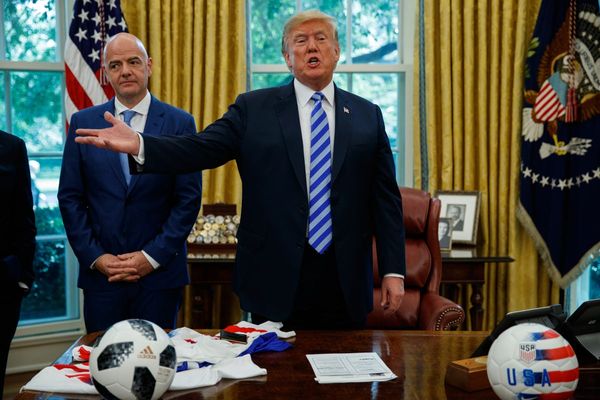Pharmac’s decision to fund continuous glucose monitors and automated insulin delivery systems for the approximately 18,000 people who currently live with type 1 diabetes in Aotearoa New Zealand is good news.
The decision comes after years of advocacy from patient groups and clinicians.
But there are problems within the broader system – particularly around workforce shortages – that mean full patient access to training on how to use the insulin pumps will likely take years.
Failing to address these issues will also perpetuate health inequities for Māori and Pacific people, who are less likely to have used the monitor and pump in the past, and may have to wait longer for training. These delays could mute the positive effect of Pharmac’s funding decision.
A complex balance
Type 1 diabetes is an autoimmune disorder that causes a person’s pancreas to stop producing insulin. This all-important hormone is needed to move glucose into every cell in the body.
Without insulin, the cells (and the person) “starve”. While the current approach to the management of type 1 diabetes – finger pricking to test blood glucose levels and injecting insulin – works, it’s complex.
Inject too much insulin and you’ll get low blood sugar (hypoglycaemia). This leaves a person with type 1 feeling shaky and weak, or possibly even in a coma. Don’t inject enough and you have ongoing high blood sugar (hyperglycaemia). This leads to long-term health complications.
Figuring out the right amount of insulin is elusive. Needs constantly vary according to time of day, diet, exercise, illness, caffeine, alcohol, stress and other factors. This can take a toll psychologically and physiologically.
Modern solutions
Continuous monitors track blood glucose levels 24 hours a day through a sensor just under your skin, replacing finger-prick testing. They are widely funded and used overseas.
The monitors alert users to low blood glucose and have significantly reduced hospitalisations for people with type 1 diabetes.
Combining the monitors with a pump and appropriate algorithm automates the delivery of insulin when glucose levels rise higher than a patient’s target range – significantly reducing the day-to-day burden of treatment.
But the continuous monitors and insulin pumps are expensive.
Prior to Pharmac’s decision, the monitors were completely unfunded. Prices ranged between NZ$2,600 and $4,800 per year. Insulin pumps were funded, but only for a small group of people.
This created an ever-widening equity gap. Māori and Pacific people with type 1 diabetes were less likely to access monitors and pumps. They were also more likely to have recurrent hospitalisations for diabetes-related events.
A workforce shortage
When compared with other countries, New Zealand has been slow to fund the monitors.
Unfortunately, the diabetes workforce is also significantly understaffed when compared to international guidelines.
There is a shortage of all qualified health care professionals for type 1 diabetes including endocrinologists, nurse practitioners, diabetes nurse specialists, dietitians, psychologists, social workers and podiatrists.
To meet international recommendations, New Zealand would have to more than double the clinical workforce.
Most people with type 1 diabetes will be able to rapidly access the monitors because these can be prescribed through GPs as well as by diabetes specialists. However, insulin pumps and automated insulin delivery will only be accessible through specialists.
While insulin pumps offer advantages for managing glucose levels, learning to use the device takes time and requires support from clinicians. This will likely be a problem, particularly for those who already have challenges accessing healthcare services in this country.
An equity issue
Māori and Pacific people with type 1 diabetes are less likely to be current insulin pump users. This means there is a clear risk of workforce shortages causing those who would benefit most from automated insulin delivery to be among the last to have access.
Increasingly, evidence on continuous glucose monitors and automated insulin delivery shows they improve managing type 1 diabetes for everyone.
Monitor use has been shown to reduce the differences in the management of glucose levels between Māori and non-Māori children with type 1 diabetes.
Automated insulin delivery can also be an effective tool for children and adolescents with very high-risk glucose levels.
So, thank you Pharmac. Funded devices are a game changer. New Zealand has moved from an outdated, inequitable system of technology funding in type 1 diabetes to a progressive and fair system. But so much more needs to be done to support everyone with this disease.
Lynne Chepulis receives funding from the Health Research Council of New Zealand. She is an executive member of the New Zealand Society for the Study of Diabetes.
Hamish Crocket receives funding from the Health Research Council of New Zealand. He is an executive member of the New Zealand Society for the Study of Diabetes and is the chairperson of Nightscout New Zealand, a diabetes advocacy group. Hamish has been living with type one diabetes since 2013.
Martin de Bock receives funding from Novo Nordisk, Medtronic, Ypsomed, Dexcom, and Insulet. Honoraria, travel expenses or speaking fees from Novo Nordisk, Sanofi, Pfizer, Medtronic, Boerhinger Ingelheim, Ypsomed, Dexcom, and Insulet. Advisory Boards for Tandem and Dexcom, Tautoko Tech, Nascence biomedical.
This article was originally published on The Conversation. Read the original article.







